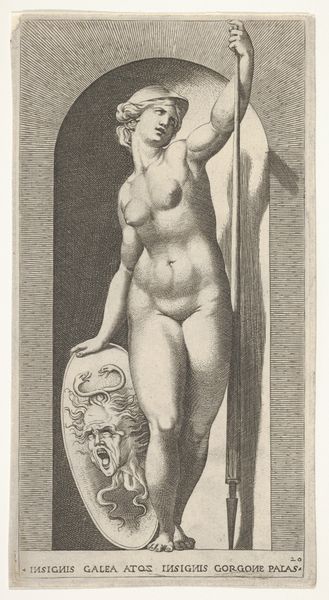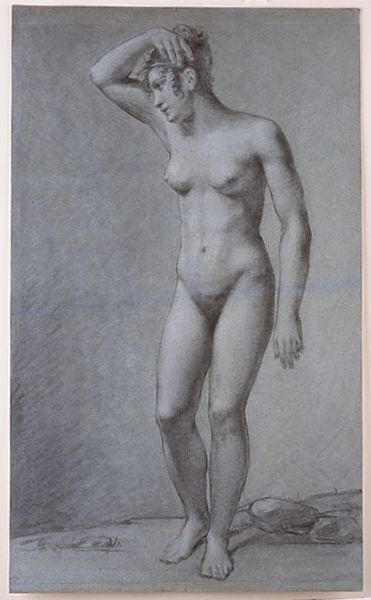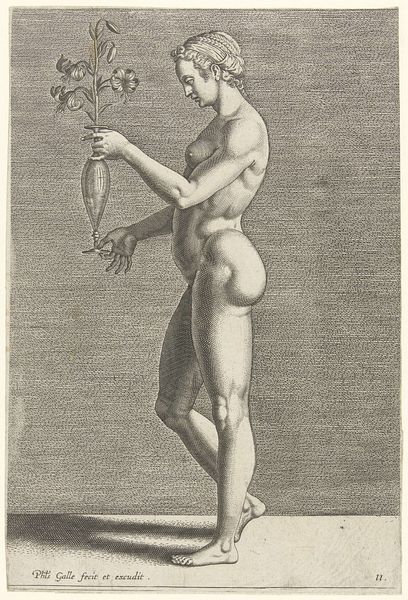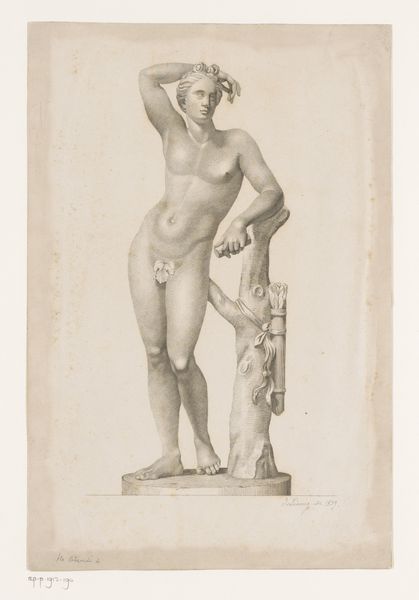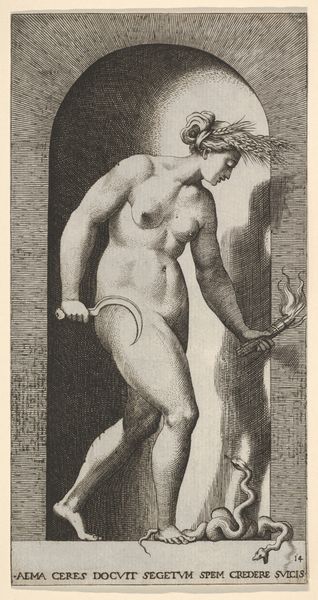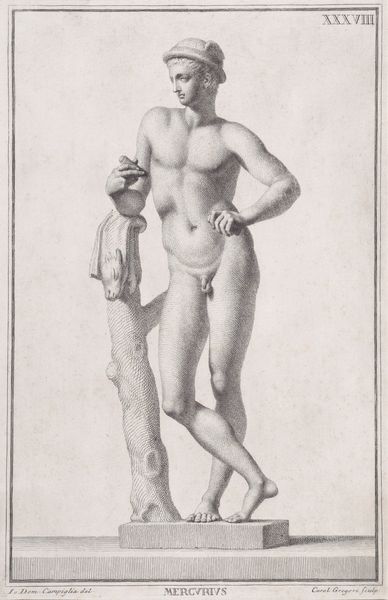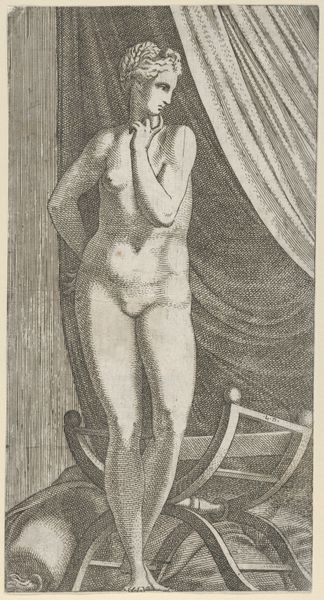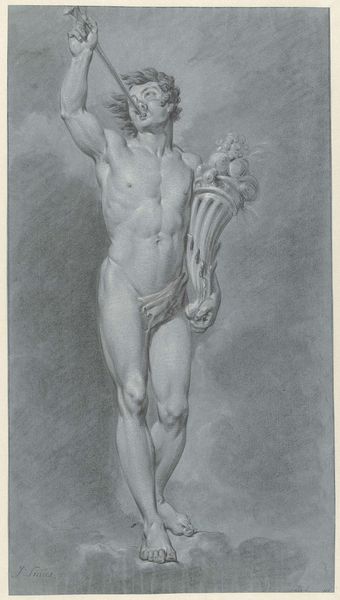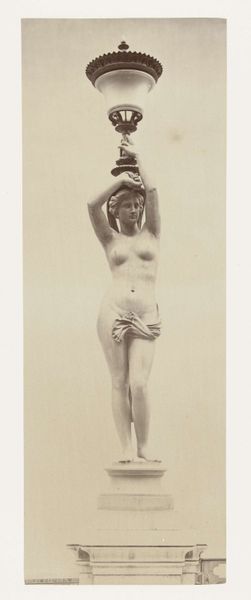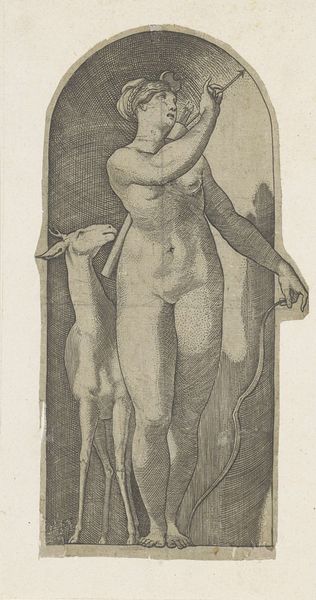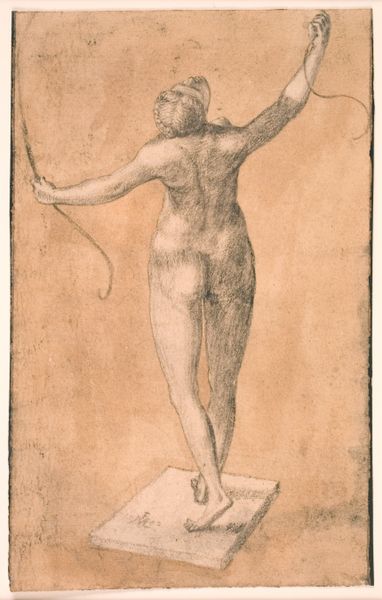
drawing, sculpture, graphite, charcoal
#
drawing
#
classical-realism
#
charcoal drawing
#
figuration
#
form
#
charcoal art
#
ancient-mediterranean
#
sculpture
#
line
#
graphite
#
charcoal
#
history-painting
#
academic-art
#
charcoal
#
nude
Dimensions: height 607 mm, width 397 mm
Copyright: Rijks Museum: Open Domain
Marc Louis Arlaud created this drawing of the Hermes van Belvedere, using graphite and black chalk. The Hermes is based on a Roman marble sculpture, itself a copy of a Greek bronze original attributed to Praxiteles. Let's consider how the cultural admiration for Classical antiquity has shaped perceptions of beauty and masculinity, particularly in the Western art tradition. The sculpture presents an idealized male form: youthful, athletic, and nude. This idealization is rooted in specific cultural values that historically privileged a certain type of male body. We might ask ourselves, whose bodies are excluded from this vision of perfection? What does it mean to reproduce this image, and what does it tell us about the ongoing desire to return to a perceived "golden age?" Arlaud’s drawing invites us to consider the ways in which classical ideals continue to influence and shape our understanding of identity, representation, and the body.
Comments
No comments
Be the first to comment and join the conversation on the ultimate creative platform.
